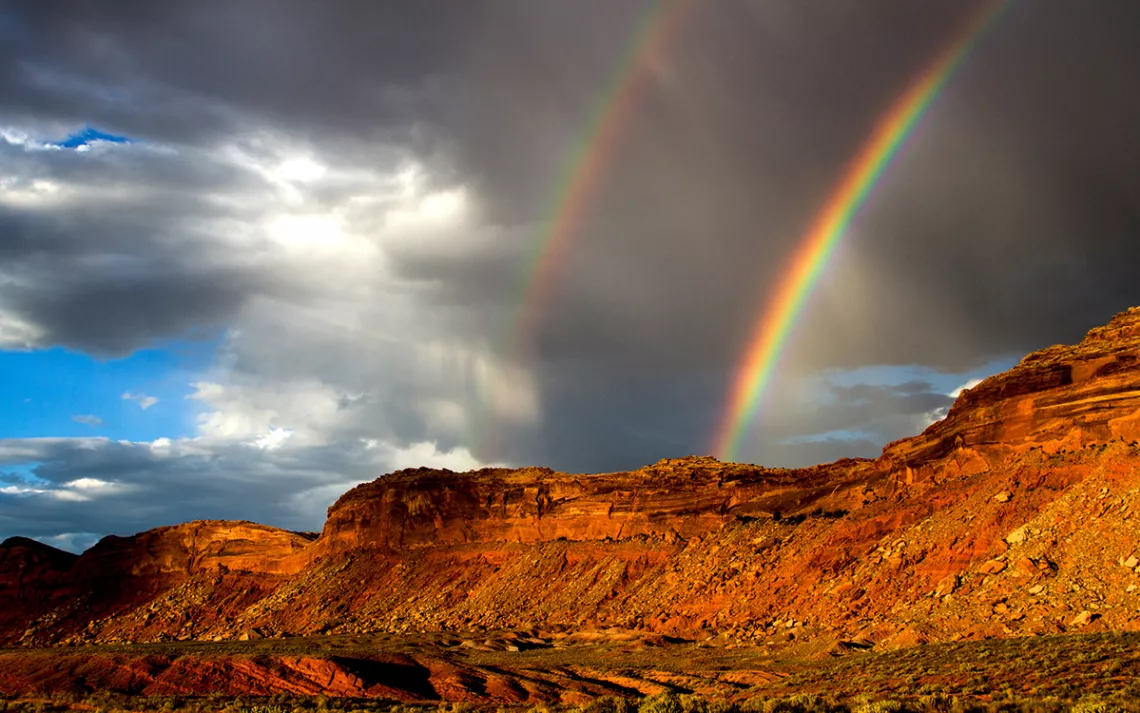Biden Fully Restores the Bears Ears and Grand Staircase–Escalante National Monuments
Hints of a new, collaborative land-management process between tribal nations and the federal government

Photo by Josh Ewing
Today, President Joe Biden restored more than 2 million acres to Utah’s Bears Ears and Grand Staircase–Escalante National Monuments. In doing so, he reversed the cuts imposed by former president Donald Trump at the behest of Republican politicians in Utah, which opened lands considered sacred by five tribal nations to oil and gas drilling and uranium mining.
In a Rose Garden ceremony, Biden was introduced by Deb Haaland, the country’s first Native American interior secretary, who celebrated the move that “permanently protects the homelands of our ancestors.” Taking the mic from the clearly moved Haaland, Biden quietly echoed his famous aside to Barack Obama on the occasion of the signing of the Affordable Care Act: “This is a big deal,” he said. “This may be the easiest thing I’ve ever done as president.”
Obama established the 1.35-million-acre Bears Ears National Monument in 2016—as Biden noted, the first time a national monument was established at the request of tribal nations. In 2017, Trump slashed that acreage by 1.15 million acres, also cutting nearly in half the land preserved by the Grand Staircase–Escalante National Monument. It was the first time a president had attempted to employ the Antiquity Act to shrink a protected area, and it drew quick lawsuits from tribal nations and environmental organizations, including the Sierra Club.
While newly elected President Biden promised to look into restoring the monuments, his administration faced continuing pressure from the Southwest nations that made up the Bears Ears Inter-Tribal Coalition (BEITC), composed of delegates from the Hopi Tribe, Navajo Nation, Ute Indian Tribe, Ute Mountain Ute Tribe, and the Zuni Tribe. Grand Staircase–Escalante has a partially overlapping set of tribal connections, including the Paiute, Hopi, Zuni, Diné/Navajo, Ute, Jemez Pueblo, Ute Mountain Ute, and Acoma nations.
The tribal nations’ efforts were clearly aided by the confirmation of Deb Haaland, a member of the Laguna Pueblo in New Mexico. “Today’s announcement is not just about national monuments,” she said at the ceremony. “It’s about this administration centering the voices of Indigenous people and affirming the shared stewardship of this landscape with tribal nations.”
The tribes welcomed the new tack from Washington. "By taking this action,” said the BEITC in a statement, “President Biden will be recognizing the deep and enduring ancestral and cultural connections that Tribes have to this landscape and taking a step toward honoring his commitment to Indigenous People by acknowledging their original place in this country that is now our shared home."
There is more work to be done, though, as the restored monuments will require new management plans, and the members of the BEITC expect seats at that table. “The Monument represents a historic opportunity for the federal government to learn and incorporate our tribal land-management practices,” said Ute Indian Tribe Chairman Shaun Chapoose. “Practices that we developed over centuries and are needed more now than ever.”
What form those practices will take is yet to be seen, although it will surely involve the immediate cessation of drilling and mining activity at the monuments. According to the BEITC, “In this new model, the traditional knowledge and place-based conservation strategies of Tribal communities will play a significant role in shaping efforts to conserve and plan a resilient future for this landscape that we all hold dear.” Interior Secretary Haaland voiced the same hope in her remarks: “Together,” she said, “we will tell a more complete story of America.”
 The Magazine of The Sierra Club
The Magazine of The Sierra Club